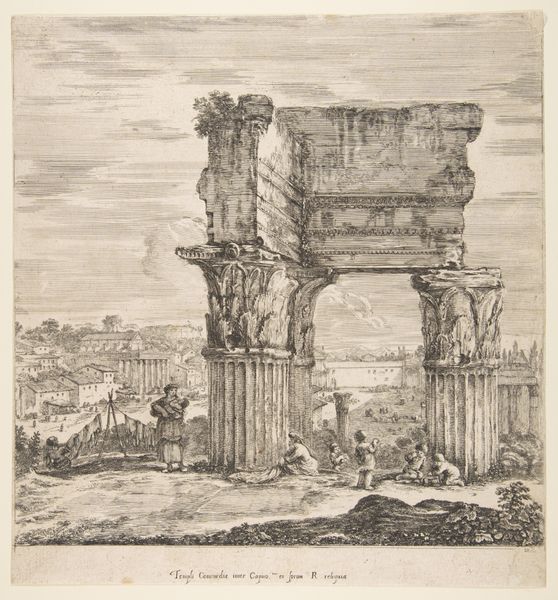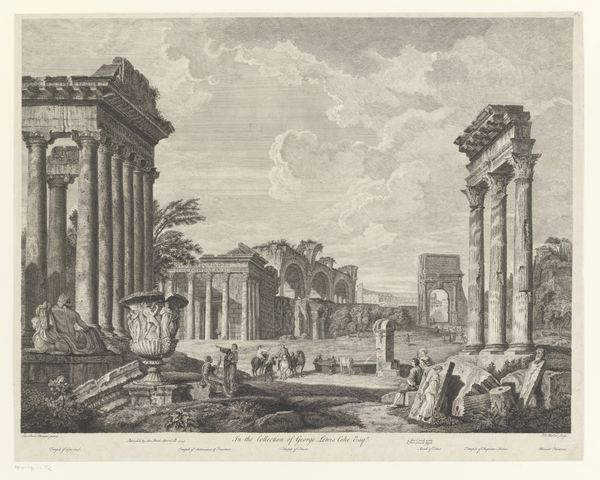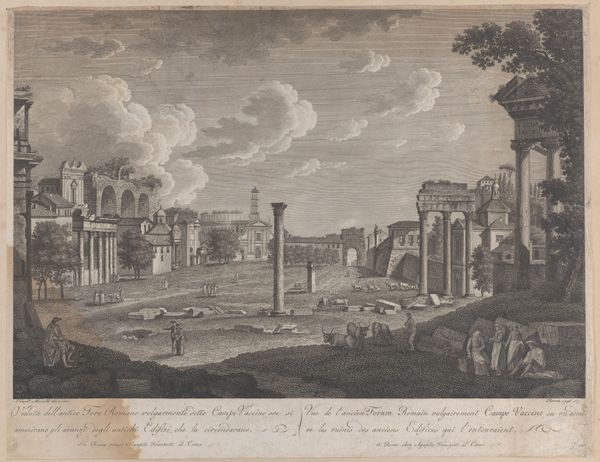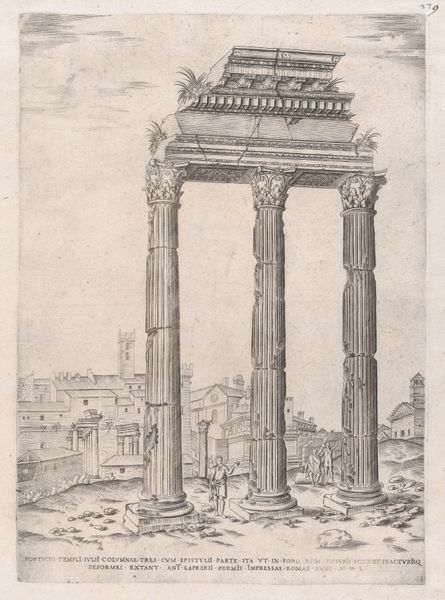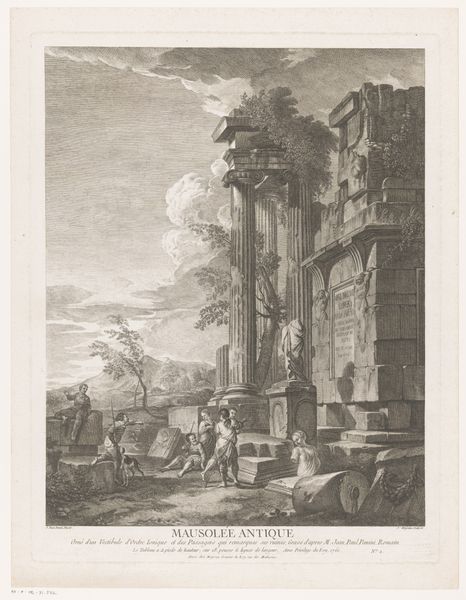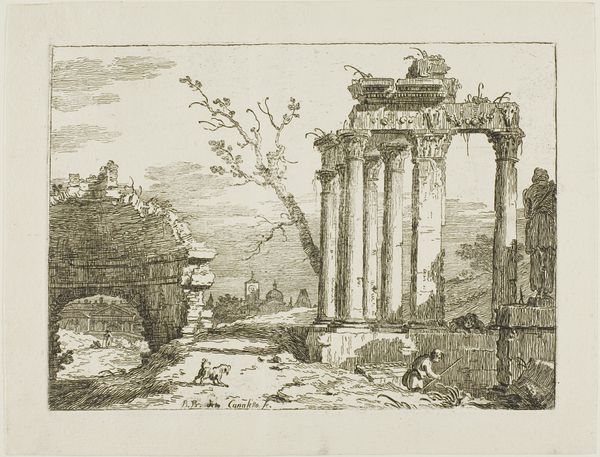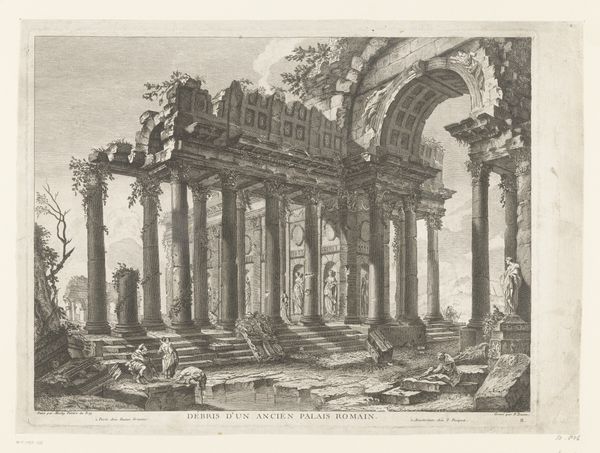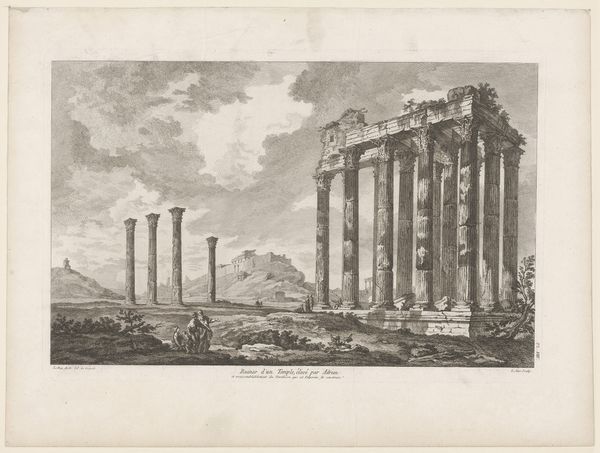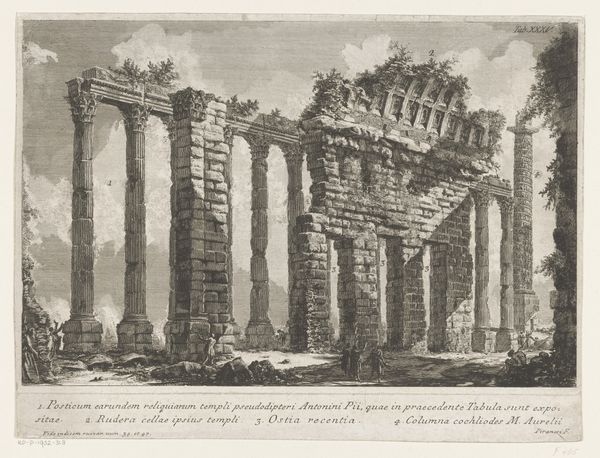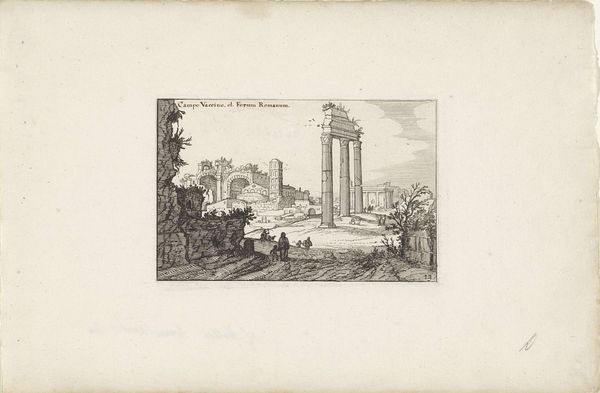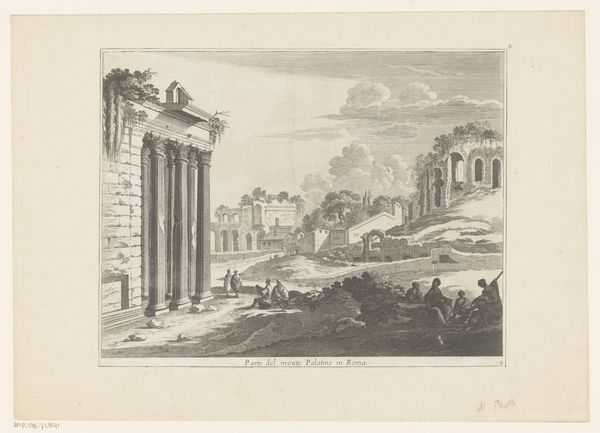
print, engraving, architecture
#
neoclacissism
# print
#
old engraving style
#
landscape
#
classical-realism
#
geometric
#
line
#
cityscape
#
engraving
#
architecture
Dimensions: height 455 mm, width 365 mm
Copyright: Rijks Museum: Open Domain
Luigi Rossini made this print of the Temple of Concordia in Rome some time in the first half of the 19th century. Rossini's image is an interesting example of the public role of art. The Temple of Concordia in the Roman Forum was originally built in the 4th century BC but was rebuilt several times. It was a site for Senate meetings and was meant to promote harmony in the city. By Rossini's time, the ruined temple was a relic of the Roman Empire. Looking closely, you can see how Rossini uses visual codes to create meaning. The temple is in ruins, suggesting the decline of the Roman Empire, and the image is in black and white, further suggesting decay. However, the temple is still standing, suggesting the enduring power of Rome. By the 1800s, Rome was no longer the capital of an Empire. It was the capital of the Papal States, and Rossini’s print served as a reminder of Rome’s former glory during a time of political and social upheaval. To understand this artwork better, look into the history of Rome in the 19th century.
Comments
No comments
Be the first to comment and join the conversation on the ultimate creative platform.
